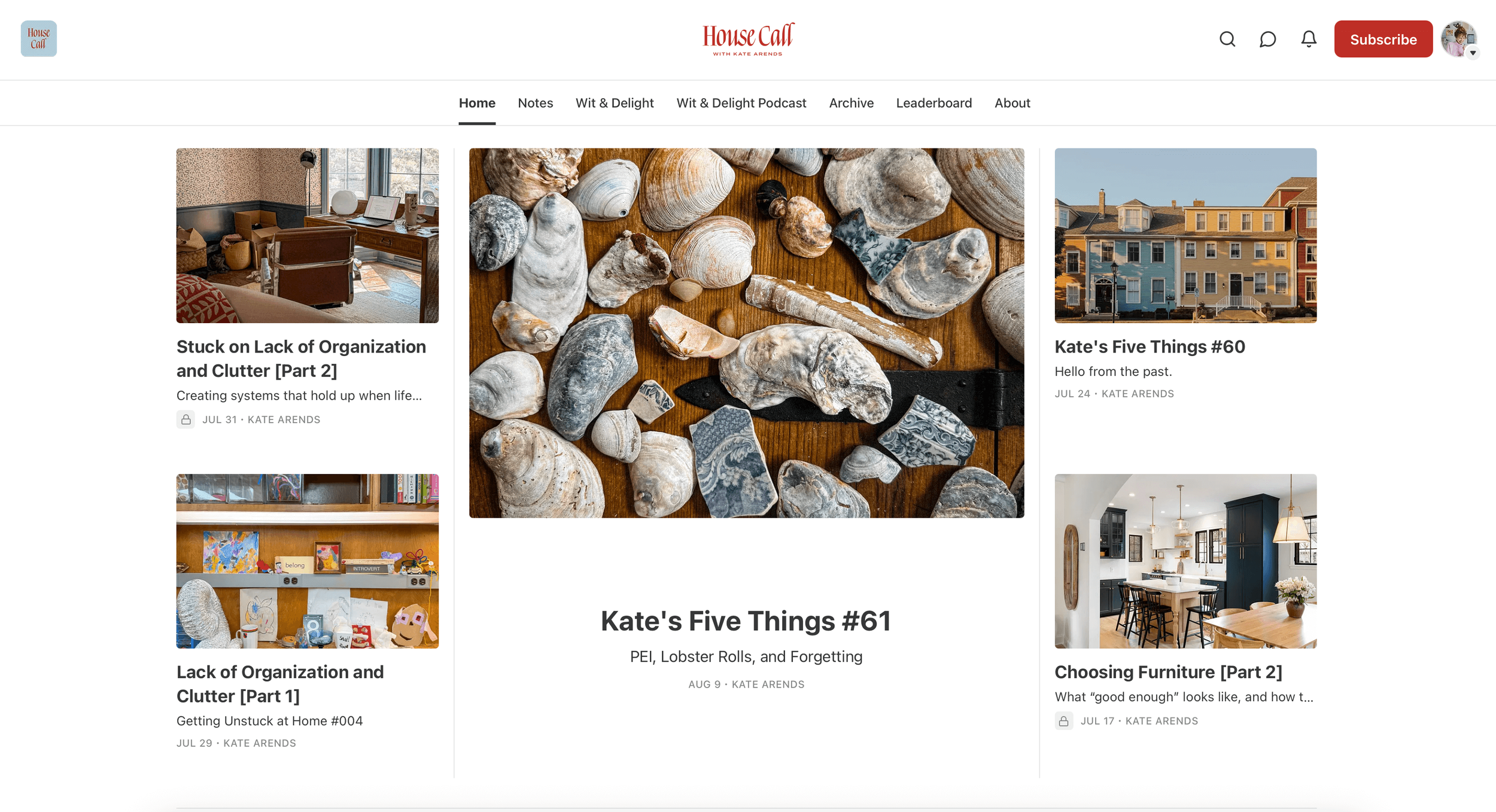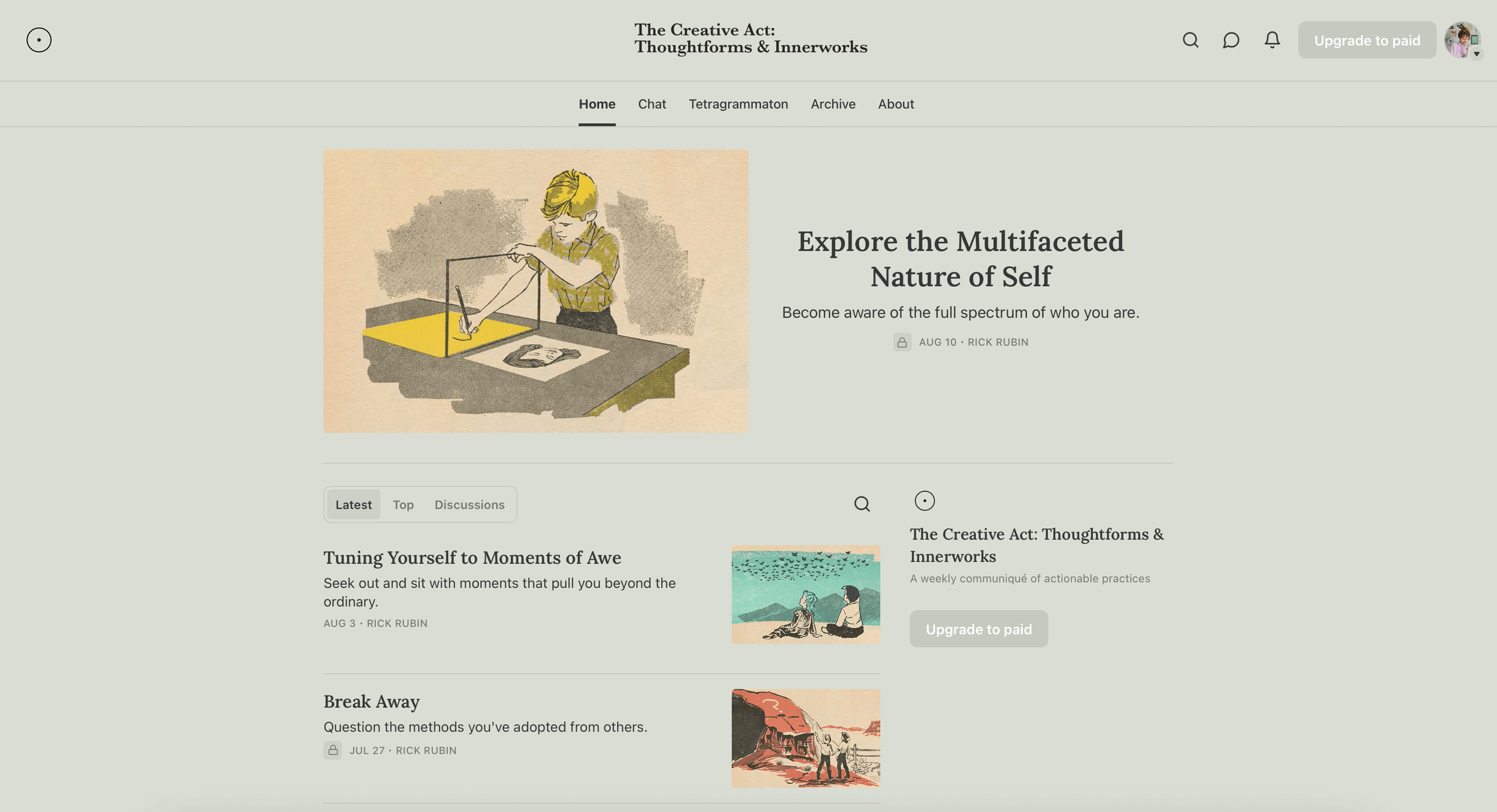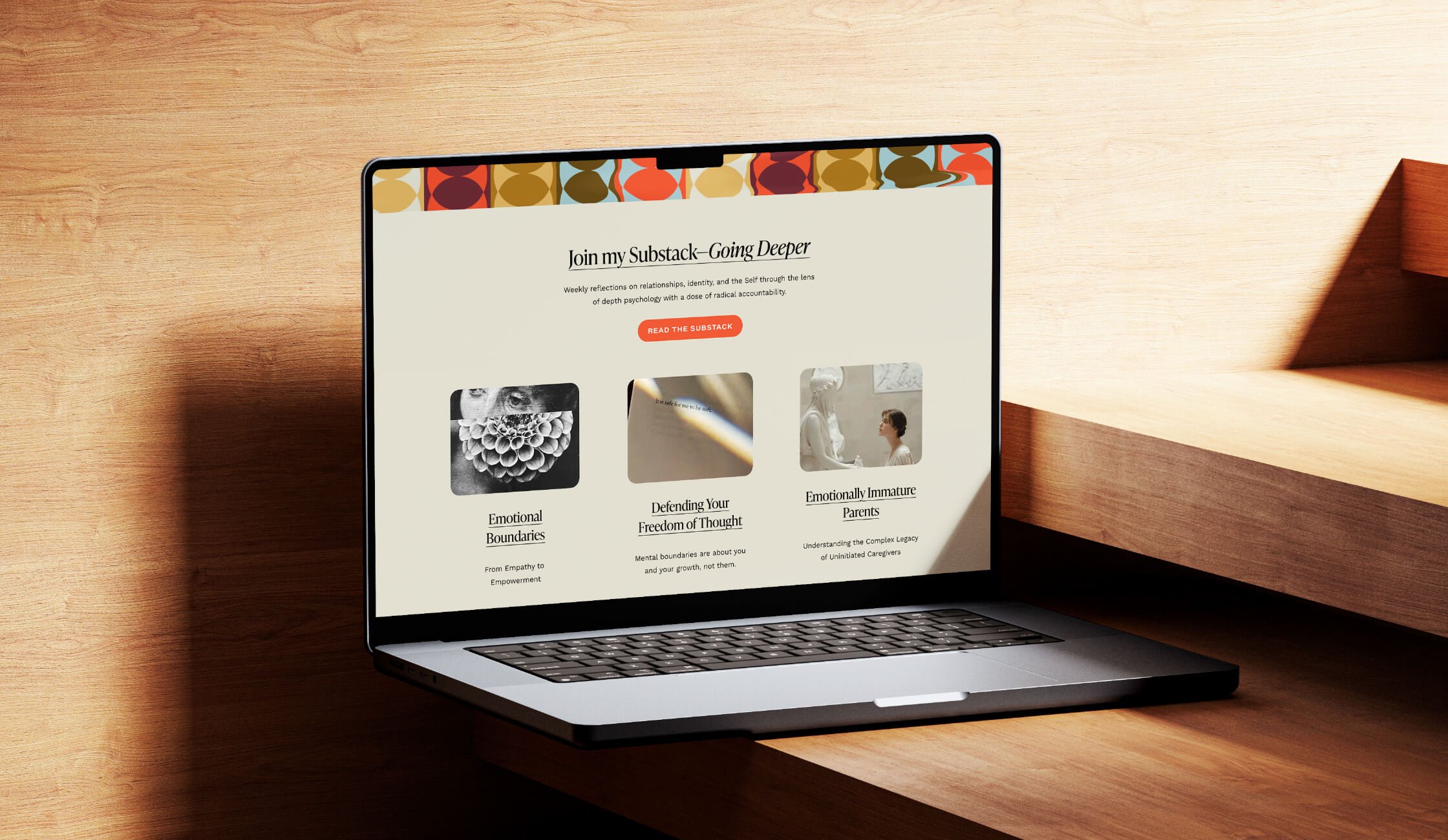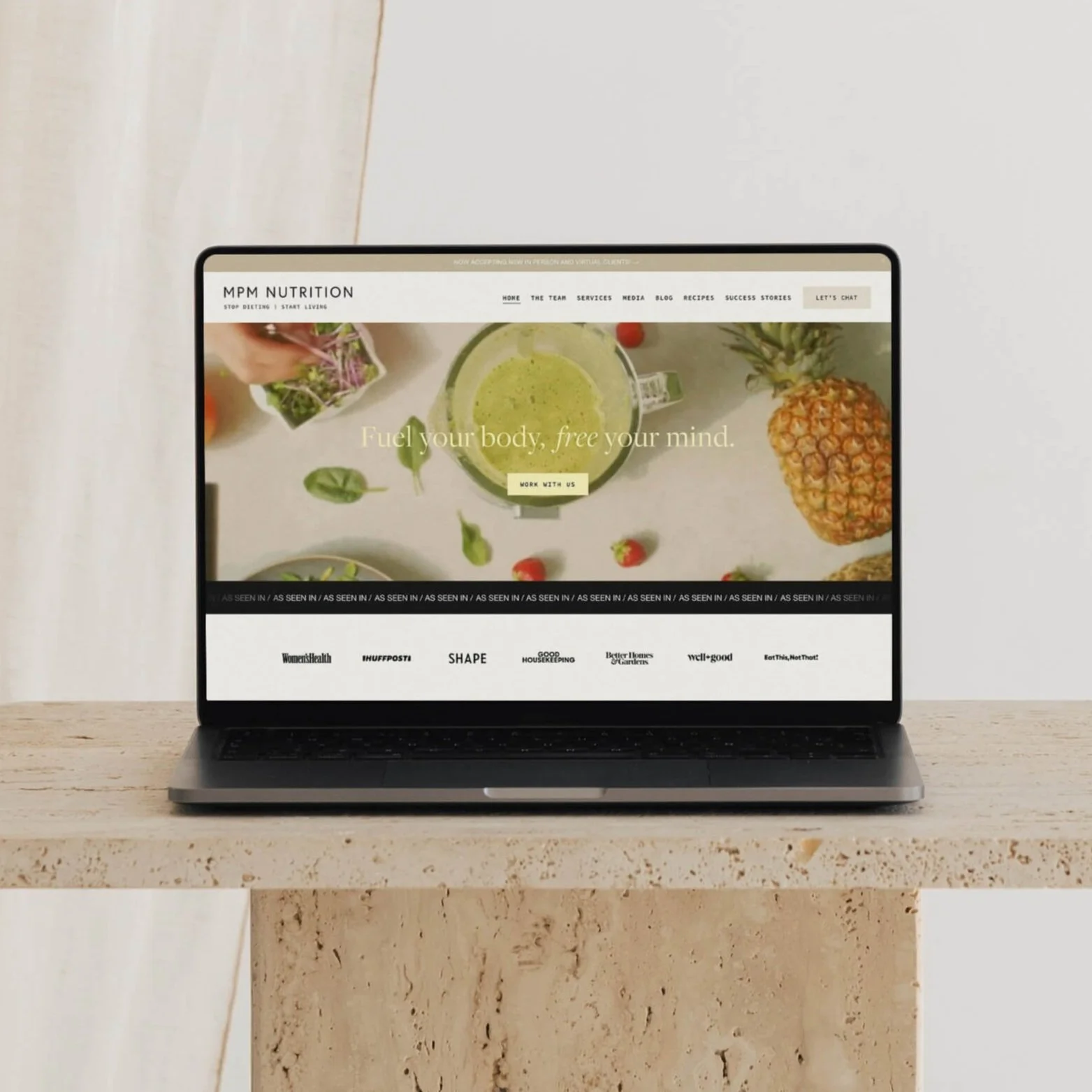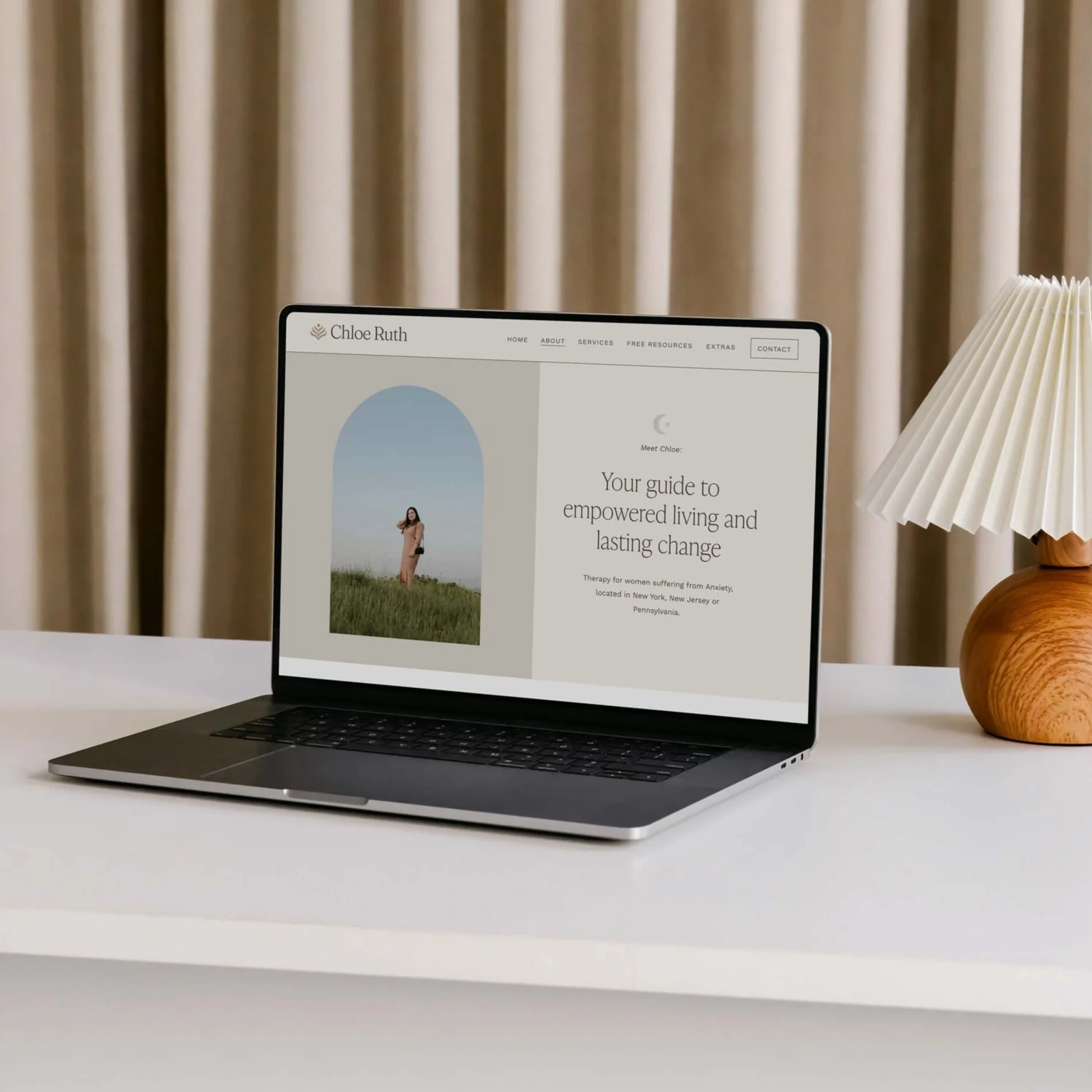What Is Substack and How Does It Fit Into Your Website and Brand?
Published August 2025
If you’ve been hearing more about Substack lately and wondering what it is, how it works, and whether it fits into your brand or website strategy you’re in the right place.
Let’s break it down from both a functional and brand perspective so you can decide if Substack makes sense for you (and how to make it look good while you’re at it ✨).
What is Substack?
Substack is part email newsletter, part blog, part community hub and it can be a super effective marketing tool and brand extension.
It’s designed to help writers and creators publish content directly to their audience either for free or as a paid subscription.
What makes Substack different from other marketing tools right now is the feel of it. It’s slower. It’s simpler. It’s built around connection and writing rather than sales funnels and automation.
It’s giving old-school blogging energy with a modern interface. I polled my audience over on instagram and people described it as:
☁️ “A breath of fresh air”
📓 “Nostalgic and blog-like”
🧘♀️ “A place for real connection”
📣 “Less pressure-y than instagram”
🎧 “Like podcasting, but easier to start”
Is Substack right for your business?
The first questions to ask are: Are your people using Substack already? Are your customers there? Are your peers there?
From a business strategy perspective, it doesn’t make much sense to be on a platform that nobody in your community is currently using. You can poll your existing community to find this out! Chances are, if a decent amount of your current followers are using Substack, then you will be able to find and connect with like-minded people. Also keep in mind that you could use Substack more for peer-to-peer connections!
Overall, Substack is a great marketing tool for service providers, therapists and coaches who want to:
Share deeper, longer-form content
Build a loyal audience over time
Create a paid or free community around their ideas
Rely less on Instagram or other short-form social media platforms
If you’re feeling burned out on fast content or want to make writing a bigger part of your business, Substack might be the low-lift, high-connection space you’ve been craving. But from my experience and from what I’ve seen, that growth may take some time. Just like a podcast. Growth will only come after consistent creative output, engaging with others on the platform and continuing to send new people over to your substack. That’s why it’s important to feel internally excited and aligned with the process of writing and engaging on their too. It’s not a quick fix or magic bullet. Enjoying the process is critical for long-form “content success”.
But How Does it Fit in Your Customer Flow Journey?
This is a big one and it’s going to be different for everyone.
If you think about your current business marketing strategy… some people will find you on Instagram and click over to your site. Some will discover your blog via Google. Others might signup for a freebie you’ve already created and they join your newsletter first and slowly warm up to working with you. Substack can act as either and any of those, which is why it’s sometimes a confusing tool.
Substack can be different types of marketing tools for you:
As a traffic tool or an alternative to your instagram page or SEO driven blog (aka attract new people into your world or “visibility”, because Substack innately has it’s own search function and algorithm).
As a freebie (providing them with completely “free value” after they’ve already found you somewhere else).
As a nurturing tool between services or offers (more of a “nurture” piece, heart-led, more value, deeper connection… like a podcast).
Or as a low-ticket offer (community members join your Substack for paid content, creating an income source for you and also leading to your you’re higher ticket offers).
If you’re not sure where it fits, I recommend mapping your customer flow out visually (grab my free Customer Flow worksheet if you need help!) and placing Substack where it supports, not competes with, your existing content.
It’s also worth noting that Substack can be MANY of these things all at once. Just like instagram actually. By mapping out your customer flow journey it can give you motivation and clarity around the marketing actions you’re taking (less throwing spaghetti at the wall and more intentional, aligned actions). We all have a lot on our plates. Marketing moves should feel aligned to you personally and aligned to your business strategy.
How Does Substack Connect to Your Website?
Let’s talk integration! If you're already running a professional website, here are a few ways to seamlessly connect your Substack:
Add it to your top navigation as a tab or new “page”: My professional recommendation would be to just label it “Substack” and to “open it in a new tab”.
Feature it on your homepage: You can embed a preview of your top 3-4 posts towards the footer of your homepage. See the image example above of Vanessa Bennett’s website.
Use a popup and/or announcement bar: Especially if it’s the most important call to action on your website (if it’s acting as your primary freebie).
Link it on your Services Page and Free Resources page: Treat it like one of your offers, because it is!
Mention it in blog posts or on your About page: Let people know it exists.
Multiple touchpoints make it easier for people to say “yes” and join so many of you may want to do all of these ideas!
Blog vs. Substack: Do You Need Both?
You don’t have to choose! Here’s how I like to think about the difference:
Blog = Created for SEO, searchable content, evergreen resources you can use for your existing clients. Your blog can be purposefully SEO driven or be purposefully created as a library of resources for clients, answering top questions you get asked about (aka the blogpost you’re reading right now 😉).
Substack = Connection, community, voice, relationship-building, thought-leadership. “Body of work” type of content.
If you already have a blog, you can absolutely duplicate content or repurpose it for Substack to get you started over there. For current SEO and “AI search” reasons I do not recommend deleting or arching your existing website blog content. Keep it put.
Email Marketing vs. Substack: Do You Need Both?
You don’t have to choose on this either! Here’s how I like to think about the difference:
Email Marketing like Flodesk or Kit = Creating segmented or automatic nurture sequences, sales emails for launches, and you can of course link to your Substack (like you would a blogpost or instagram post) within your newsletter.
Substack “Newsletter” = Sharing new posts you write to subscribers.
If you are just getting started with email marketing, however, and have a desire to create a Substack, I actually think using Substack alone is a great choice as it gets you in the swing of sharing valuable content at a consistent cadence (which is honestly the hardest part of email marketing).
Website vs. Substack: Do You Need Both?
You definitely don’t have to choose on this either! Here’s how I like to think about the difference:
Website = Where your personal umbrella brand lives. This is the hub of everything and your home on the internet. The thing you own and you control, that drives actual conversions. It’s where customers are making purchasing decisions. A website communicates professionalism, and positions you as a trusted authority in the eyes of SEO and “AI Search”. This will increasingly become more important as tech evolves, not less important.
Substack = A marketing tool to serve and build a community. Can be a small or large income stream for you.
If you currently do not have a website and you’re working full time somewhere else, you may consider starting a substack to dabble in content creation and community building. I think this is a lovely idea! When you are ready to create a brand that positions you as an expert who is able to charge premium pricing, then you’ll want to start looking for your website designer (hello!).
How to Brand Your Substack (Without Overthinking It)
Now let’s get into design. As a brand and web designer, I get a lot of questions about how to make Substack match your brand. Here’s my take:
You don’t need it to be perfectly on-brand (thank goodness). People know they are on a new app or using a new tool. It does not need to be a perfectly seamless experience for them. However, it should feel cohesive with the rest of your online presence. Here’s how to do that simply:
Fonts:
Don’t stress about exact matches. Just choose something that’s close to what you use on your site. Serif for serif, sans serif for sans serif. It’s more about the feeling than the exact typeface.
Colors:
This matters more. If your website is bright white and your Substack is all creamy tan, it can feel visually off. Try to use similar colors so it feels like part of the same world. If you’re a past client you should have those hex codes in your brand guide!
Imagery:
Use your own brand photography when possible. If you’re using stock, go for higher quality collections like Unsplash+, HauteStock or iStock.
Tiny Icon (top left of your Substack screen):
This logo space is VERY small. Don’t shrink your full primary logo into that spot, especially if the font in a tagline becomes completely illegible. Instead, use your favicon (browser icon from your website), a monogram submark, or even just a branded signature “color” as a circle or square shape. Subtle, but effective.
Header Logo:
The top logo on Substack is horizontal so you’ll want something simple here that fits nicely in a horizontal orientation. You can create a new Canva version of your name using your brand fonts (either your logo fonts or headline font). Keep it typographic or use one of your existing brand icons alongside it.
Naming Your Substack:
This can be your business name, or something more creative! Think of it like naming a podcast: it can be playful but the good ones are always “on-brand”. For Substack search reasons I also reccomend the words be something that people may be searching for, for example, if I created a substack I would want either “brand”, “branding”, or “websites” in my name. If you’re a life coach who does somatic work, consider using the word “Somatic” or “Life Coach” or “Coach” in your title.
Final Thoughts & Next Steps:
Substack is a beautiful way to connect with your audience more deeply and with less pressure. It can complement your website, email list, or blog, or it can stand alone as your main publishing platform. If you’re feeling excited to take this advice and start creating over there, go for it! If you need more design and tech support, you can book a Design Day and book a consult call so we can go over your ideas. I’d love to support you. ✨
That’s it! Whether you’re a client reading this or you’re someone on the internet looking for some guidance, I hope this blogpost feels supportive for wherever you are in the process.
If we haven’t met yet, I’m Jena Thielges a Brand and Website Designer. I specialize in working with women who are coaches, therapists, healers and service providers. Founded in 2019 on seven years of agency experience, Sundai Studio is more than a brand and web design studio—it’s your energy, embodied in design. Because even your branding should feel aligned.
Check out my offers here and get in touch if you’re ready to book a free consult call!
Y O U M A Y A L S O E N J O Y …

